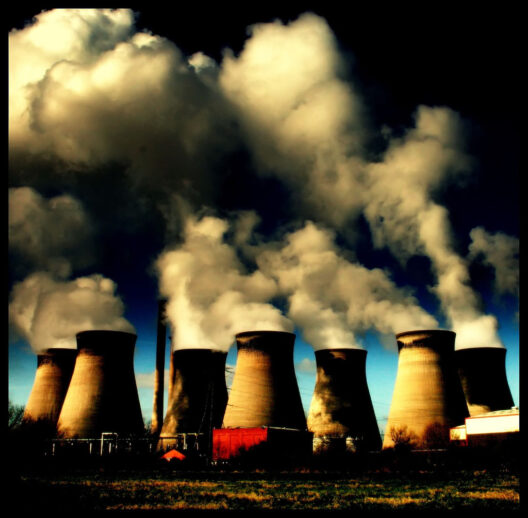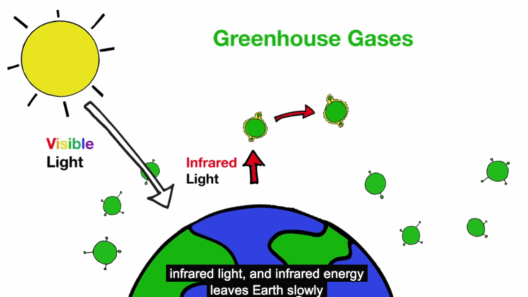The term “Domino Effect” often evokes imagery of sequentially cascading events, where one small change precipitates a larger, more impactful outcome. When applied to the context of global warming, the domino effect concretely illustrates how a single climatic alteration can initiate a chain reaction, resulting in myriad environmental crises. As temperatures rise, it begs the question: are we not merely witnesses to this phenomenon but also unwitting participants in a perilous experiment on our planet?
Global warming is primarily driven by the greenhouse effect, whereby excessive concentrations of carbon dioxide and other greenhouse gases in the atmosphere trap heat, leading to rising global temperatures. This warming trend sets the stage for a multitude of interrelated crises. As one crisis begets another, it becomes increasingly difficult to assess the full magnitude of these consequences. Thus, the pressing challenge we face is not merely reversing climate change but understanding and addressing its complex repercussions.
To begin with, one of the most immediate effects of global warming is the melting of polar ice caps and glaciers. As ice melts, it contributes to rising sea levels. This phenomenon threatens coastal cities, eroding shorelines and displacing communities. Imagine the tens of millions of individuals who may find themselves without homes if the ice caps continue to recede at their current pace. The question looms: how prepared are we for mass migrations, and what ethical responsibilities do we hold toward those affected?
Moreover, the melting of glaciers impacts freshwater availability. Glaciers serve as natural reservoirs, gradually releasing water during warmer months. As these glaciers recede, regions that rely on glacial melt for their water supply may face severe shortages. For example, communities in the Himalayas could experience diminished water flow in rivers such as the Ganges. This drop in water availability can lead to agricultural failures, creating food insecurity. This situation presents another domino: food scarcity can lead to political instability, potentially inciting conflict over dwindling resources.
As we shift our gaze to ecosystems, we witness how global warming disrupts biological balance. The increasing temperatures alter habitats and threaten species that cannot adapt quickly enough. Coral reefs, often dubbed the “rainforests of the sea,” are particularly vulnerable; bleaching events occur when corals expel the algae that sustain them due to heat stress. The fading of these ecosystems further jeopardizes marine life, affecting not just biodiversity but also the fishing industries that depend on healthy fish populations. The question posited here is stark: can we afford to lose these vital ecosystems, which provide numerous services, including carbon sequestration and coastal protection?
In addition to ecosystem disruptions, global warming is facilitating the emergence of new pathogens and the resurgence of old diseases. Warmer temperatures allow vectors such as mosquitoes to flourish, extending their range and fostering the spread of diseases like malaria and dengue fever. This public health crisis is another domino that topples; as health systems become strained, economic productivity suffers, and vulnerable populations face existential threats. The inquiry here is pressing: how can healthcare systems adapt to address the burgeoning challenges posed by climate change while ensuring equitable access to care?
Furthermore, extreme weather events—hurricanes, wildfires, and droughts—are becoming more frequent and intense due to climate change. Each disaster not only inflicts immediate physical and emotional trauma but also triggers long-term economic repercussions. For example, a single hurricane can devastate infrastructure, displacing countless families and requiring extensive recovery resources. The financial burden often falls disproportionately on marginalized communities, exacerbating existing inequalities. As these realities unfold, one must consider: how can we foster resilience in the face of unavoidable climate-induced disasters?
As the interconnections between these crises become evident, the notion of sustainability emerges as a crucial factor in breaking the destructive cycle. Sustainable practices in agriculture, energy production, and urban planning can mitigate some of the adverse effects of climate change. For instance, transitioning to renewable energy sources not only curtails greenhouse gas emissions but also promotes energy independence, reducing vulnerability to fluctuating fossil fuel markets. However, the challenge remains in changing consumer behavior and mobilizing political action to support these crucial shifts.
Education plays an essential role in addressing the climatic domino effect. Raising awareness about the interconnected nature of climate issues empowers individuals and communities to make informed decisions that contribute to mitigation efforts. Whether it involves reducing carbon footprints, supporting sustainable businesses, or advocating for policy change, collective action is foundational in combating global warming and its cascading crises.
Ultimately, while global warming presents formidable challenges, it serves as a clarion call for a paradigm shift in how we interact with our environment. The question arises: can humanity unite to avert the worst outcomes of climate change or will we stand by as mere spectators, watching the dominoes fall? The choice lies before us, and the time to act is now. We must confront these challenges head-on, for every action we take is a step toward either reinforcing the domino effect or establishing a new trajectory toward sustainability and resilience.







